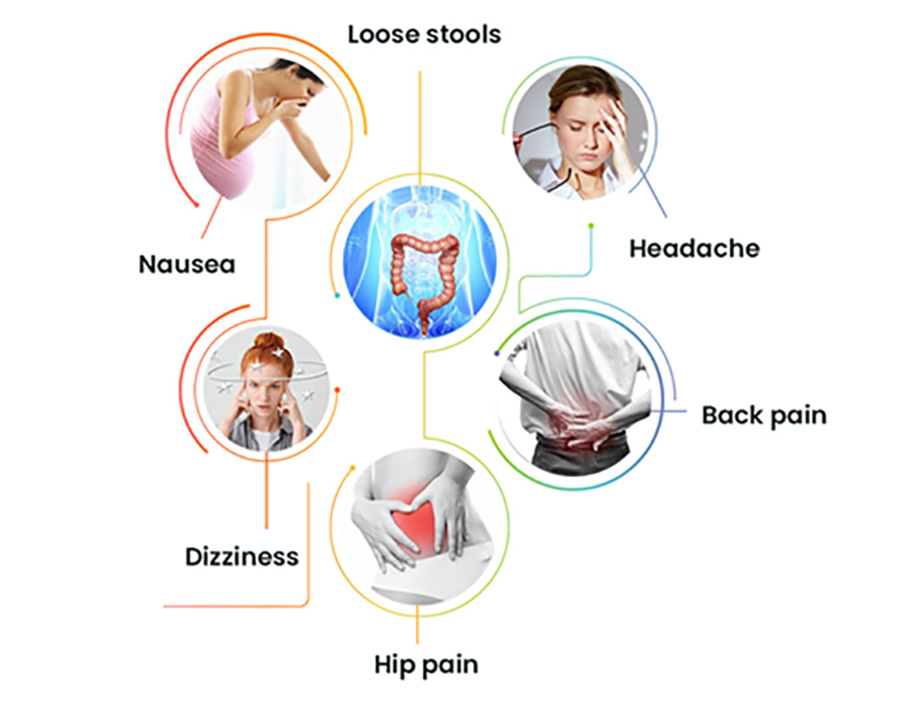Menstrual Cramps
Menstrual Cramps
Menstrual pain is a symptom experienced by more than 50% of women and is also called dysmenorrhea or menstrual cramps.
It is normal to have no pain during the period before and after menstruation. However, when there are lower abdominal pain, thigh pain, and back pain before, during or after menstruation, it is called menstrual pain.
Concomitant symptoms such as vomiting, diarrhea, nausea, fatigue, and dizziness may appear along menstrual pain.
Unless menstrual pain appeared as a cause of a particular disease, it lasts on average for 2 to 3 days.
When there are no pelvic disorders that can cause pain, but it is called primary menstrual pain if pain occurs during menstruation. Otherwise, when pain occurs during menstruation due to a pelvic disorder, it is called secondary menstrual pain.
Primary vs Secondary Dysmenorrhea

| Primary Dysmenorrhea | Secondary Dysmenorrhea | |
|---|---|---|
| Onset | After onset of first period and may improves later in life | Study shows onset occurs later in life, typically after 25years. |
| Causes | Increase prostaglandins | Reproductive tract disease like endometriosis, adenomyosis, fibrosis or pelvic inflammatory disease. IUD-copper |
| Symptoms | Cramping pain on lower abdomen and it can radiate down to the legs. May complain of nausea, vomiting, headache, or diarrhea. | Symptoms are similar with primary dysmenorrhea. Pain often starts earlier in the cycle and it continues through the period. The pain does not respond with NSAIDs. |
| Duration | Less than 72 hours | Over 72hours |
| Treatments | Hormonal contraception. Pain can control with NSAIDs. | Needs to treat underlying conditions. |
The 1st cause of primary dysmenorrhea
Relationship between ovulation and primary dysmenorrhea
Menarche and during the 12-18 months of anovulation menstrual cycle, there is no pain. Then menstrual pain occurs with the menstrual ovulation cycle, so it is believed to be related to ovulation.
When adolescent women begin ovulating menstruation, the ovaries synthesize progesterone.
Progesterone is known to promote the production of prostaglandin by the endometrium.
Prostaglandins are released from the endometrium during menstruation, and some of them are absorbed into the uterus’ blood vessels.
Prostaglandin absorbed into the uterus’s blood vessels strongly contracts the uterus’s muscle tissue and the uterus’s blood vessels, which causes hypoxia and pain in the uterus.
A secondary cause of primary dysmenorrhea
Menstrual pain only occurs in 50% of all adolescent women who have started ovulating menstruation, indicating that another secondary factor is involved in dysmenorrhea.
Severe anteflexion of the uterus
Narrowed cervix
Emotional factors (stress)
Environmental factors (family history, life, diet)
Study shows if the patient’s mother had dysmenorrhea, the daughter had dysmenorrhea (29.6%) more often than not (6.8%)
Symptoms of primary dysmenorrhea
Primary menstrual cramps begin several hours before the period or immediately start with the period and last 48-72 hours. The pain feels like cramping or throbbing pain in the lower abdomen and lumbar area. It may radiate to the inner thigh.
- It may accompany other symptoms like nausea, vomiting, tiredness, dizziness, loss of appetite, headache, and nervousness.
The pain can control with NSAIDs, hormonal therapy or both.
Causes of secondary dysmenorrhea
- Endometriosis: The most common cause of secondary dysmenorrhea
- Adenomyosis
- IUD
- Fibroids
- Endometrial polyps
- Endometrial adhesions (Asherman syndrome)
- Pelvic inflammatory disease (PID)
- Ovarian cyst
- Congenital uterine malformations (trace uterus, vaginal diaphragm, etc.)
When do you need to treat menstrual cramps?
- In case of taking painkillers for pain throughout the menstrual period
- If taking pain medication does not relieve the pain
- If you have periodic cramping pain
- When the intensity of menstrual pain gets stronger, or the period of cramps get longer.
- Have not had menstrual cramps before but it occurs suddenly (especially after childbirth)
- Pain is accompanied by other symptoms such as fatigue, headache, vomiting, and diarrhea.
- Menstrual volume or clots increase along with menstrual pain.
Causes of Menstrual Cramps in MBR Acupuncture & Herb
In traditional medicine, the cause of menstrual pain is not simply a problem with the uterus. Disorders of the other organs’ function affect the uterus and cause menstrual pain. There are eight major causes of menstrual pain in Traditional Medicine.
The symptoms include scanty periods, delayed periods, amenorrhea, or dysmenorrhea. Main symptoms are painful periods, cold limbs, coldness in lower abdomen and aversion to cold. This pattern includes a lot of blood stagnation due to poor blood circulation. If a woman with this constitution exposes to cold weather or drinks many cold beverages, menstrual pain may occur. Poor blood circulation due to coldness also can cause poor blood circulation in the uterus, which often causes severe, stabbing pain caused by blood stagnation.
Spleen Qi regulates blood within the blood vessels. Spleen Qi deficiency affects menstruation. The symptoms include bleeding within a few days after the regular period is over, perfuse bleeding than usual or amenorrhea.
Kidney deficiency symptoms include frequent urination, residual urine, dizziness, ear sounds, and often pale complexion. Kidney deficiency constitution is weak and frequent minor illnesses. It means that the body’s natural energy is weakened, and the body’s overall function has deteriorated, and the uterus is also not functioning smoothly.
The Treatments of Menstrual Cramps of MBR ACUPUNCTURE & HERE
The treatment effect varies depending on the patient’s condition, but 85-90% of primary menstrual pain improves with acupuncture, moxibustion, and herbal medicine. There is a symptomatic improvement for secondary menstrual pain when traditional medicine treatment combines with Western medicine treatment. Avoid overwork and keep your body warm during menstruation. Proper exercise helps blood circulation and helps the body get rid of waste products. Also, it is necessary to deal with unstable minds such as mental tension, excitement, and stress.


Acupuncture

Moxibustion